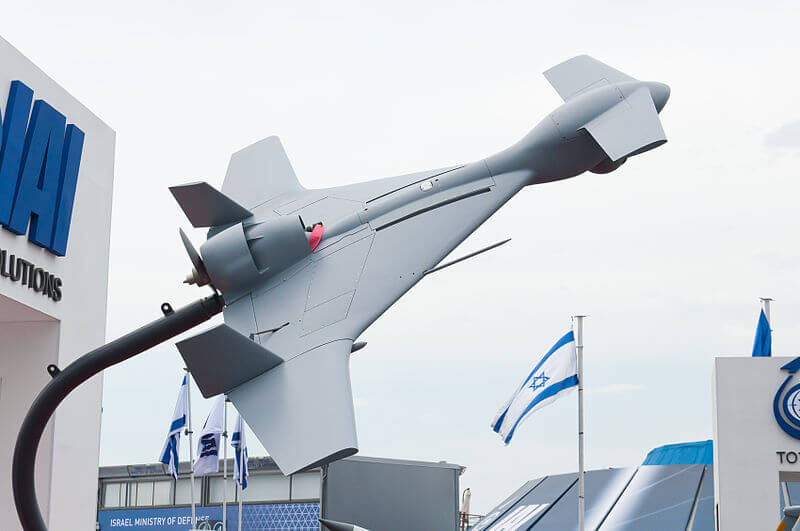
Autonomous weapons are armaments with a mind of their own. Once activated, they can select and engage targets with or without any further intervention by a human operator on the ground, air, underwater, or in space.
When used in a defensive role, they can intercept incoming attacks and protect a specific object or area and respond to predetermined threats. In contrast, offensive weapon systems, or Lethal Autonomous Weapon Systems (LAWS) also called ‘killer robots” can fight wars on their own and hunt for targets anywhere, anytime without human oversight or control.

Significantly the United States was the first country to adopt a formal policy on autonomy in weapon systems. According to the U.S. Department of Defense (DoD), autonomous weapon systems can be broadly classified as:
Autonomous weapon system: A weapon system that, once activated, can select and engage targets without further intervention by a human operator. This includes human-supervised autonomous weapon systems that are designed to allow human operators to override the operation of the weapon system but can select and engage targets without further human input after activation.
Human-supervised autonomous weapon system: An autonomous weapon system that is designed to provide human operators with the ability to intervene and terminate engagements, including in the event of a weapon system failure, before unacceptable levels of damage occur.
Semi-autonomous weapon system: A weapon system that, once activated, is intended to only engage individual targets or specific target groups that have been selected by a human operator. This includes: [s]emi-autonomous weapon systems that employ autonomy for engagement-related functions including, but not limited to, acquiring, tracking, and identifying potential targets; cueing potential targets to human operators; prioritizing selected targets; timing of when to fire; or providing terminal guidance to home in on selected targets, provided that human control is retained over the decision to select individual targets and specific target groups for engagement.
Some such autonomous weapons in use today include:

Phalanx CIWS is a rapid-fire, computer-controlled, radar-guided gun that can defeat anti-ship missiles and other close-in threats on land and at sea. The Phalanx weapon system is used by the United States Navy, and 24 allied nations including the British Royal Navy, Royal Australian Navy, Royal New Zealand Navy, and the Royal Canadian Navy, to defend against incoming threats such as aircraft, missiles, and ships. The Phalanx weapon system is programmed to perform multiple tasks like – search, detection, threat evaluation, tracking, engagement, and kill assessment in split seconds.
Iron Dome – an all-weather air defense system that can detect, intercept and destroy incoming rockets and artillery shells, and mortars fired from distances of 4-70 kilometers away. The Iron Dome’s radar can locate potential targets and calculate the expected trajectory of a rocket that may hit a populated area. The Iron Dome is capable of launching a Tamir interceptor missile at the rocket but a human operator must authorize the launch. Once a launch is authorized, the computer system independently aims at the Tamir and determines when to launch it. Once close enough to the hostile rocket, the Tamir explodes, destroying the projectiles. The computer algorithm, not the human operator, determines when to detonate the Tamir. The Iron Dome happens to be the world’s most-used system with more than 2,500 operational intercepts and a success rate exceeding 90 percent.

Guardium unmanned ground vehicle (UGV) – is an armed autonomous border protection system jointly developed by Israel Aerospace Industries and Elbit Industries to patrol the Gaza–Israel border. It is equipped with radars, high-sensitivity microphones, sensors, hostile fire indicators, and infrared cameras that can spot invaders even in the dark. The Guardium can autonomously travel at up to 70-80 km per hour and intercept trespassers near the border fence before security personnel arrives. It can be used in either teleoperated or autonomous mode – without any human interaction. It sends data to the command station letting them know its location, destination, and the view of its surroundings through its rotating camera. Such unmanned systems can also be deployed to increase the perimeter security of military bases, airports and power plants, or sensitive installations.

Brimstone missile system – is a combat-proven, ground, or air-launched fire-and-forget missile developed by the United Kingdom and used by the Royal Air Force (RAF) to seek and destroy moving targets both on land or sea in Afghanistan, Iraq, and Libya. Brimstone is relatively lightweight (approx. 50 kg), hence 12 or more such missiles can be carried by a single aircraft. Britain used them so frequently in Libya that at one point, the RAF’s inventory of Brimstone was depleted to single digits. The RAF was so happy with the missile’s performance that Air Chief Marshal Sir Stephen Dalton told members of Parliament that the Brimstone “went exactly as per the textbook and did exactly what we expected.”
The Brimstone can be launched in two distinct modes: indirect and direct. In indirect fire-and-forget mode, the missile is programmed to search a specific area and to identify, track, and strike targets beyond the visual range or line of sight. On the other hand, the pilot uses the onboard targeting system to pick out the missile’s target prior to its release in direct mode. The Brimstone can also be launched at supersonic speeds and accelerates past the sound barrier within three seconds of being launched and does not require any no further interaction from the launch platform in the post-launch phase. The highly advanced guidance system of the missile uses its own ‘brain’ to calculate and keep track of the speed, distance, elevation, and trajectory of the target. What’s more, the missile can be programmed to avoid causing any inadvertent damage to friendly forces and seek out and target the enemy only within a specified area. The missile is also fitted with a programmable self-destruct mechanism.

Harpy Air Defense Suppression System, Israel: is an all-weather day/night fire and forget autonomous weapon, designed to suppress enemy air defenses (SEAD) with high hit accuracy. Once activated, it patrols or hovers above enemy territory for hours to detect, attack, and destroy any hostile radar in its vicinity. It can be launched from a ground-based vehicle behind the battle zone and unlike other anti-radar missiles whose speed, range, and direction of approach are predictable, it cannot be easily neutralized by conventional countermeasures techniques. In autonomous mode, the Harpy loiters over a given region for up to nine hours, detects and homes in on the source of electromagnetic emissions, on and attacks without a human in the decision-making loop.

Samsung Techwin SGR-A1 Sentry Guard Robot, South Korea – is a highly classified autonomous robotic system used to guard the 250-kilometers-long Demilitarized Zone (DMZ) separating North and South Korea which happens to be one of the most disturbed border areas in the world. The primary objective of these autonomous robotic guards is to replace the human soldiers posted along the Korean Demilitarized Zone (DMZ). South Korea’s military personnel are nearly half the size of the North Korean army hence the need for such robots to perform the task which would otherwise require at least two or more human guards. Unlike human soldiers, the SRG-A1 can continuously guard major military bases in extreme weather conditions without getting tired and is fitted with CCD and infrared cameras that can detect targets 4 Km away during the day and 2 Km during the night. The intelligent surveillance and guard robot uses a lowlight camera and pattern recognition software to distinguish humans from animals or other objects. The Samsung SGR-1 is an integrated system for surveillance, tracking, firing, and voice recognition to distinguish between friend and foe. In case of suspicion, the Samsung SGR-A1 can sound an alarm, and verbally command an enemy to surrender. In case the intruder raises his arms and surrenders no further action is taken, but if it doesn’t, the SGR-1 can fire rubber bullets or Daewoo K3 machine gun depending upon the threat perception. Normally the decision to open fire would be made by a human in the control room. But in the automatic mode, the robot can take the decision on its own without the human in the loop.

Joint Strike Missile, Norway: a fifth-generation, long-range, precision-guided, stand-off missile system that can hunt, recognize and detect heavily defended targets on land or sea without human intervention. The JSW can change course in flight and fly low to evade enemy radars. It’s imaging infrared seeker provides autonomous target recognition, and a two-way data link offers retargeting and mission abort options.
That’s not all, a number of countries all over the world are investing heavily in more such remotely-operated weapons systems (RWS), lethal autonomous weapon systems (LAWS), autonomous weapon systems (AWS), or killer robots that will fundamentally affect the way wars are fought.
The biggest advantage of autonomous weapons is that they are not governed by human emotions, and can be deployed 24-7, three hundred sixty-five days a year in any weather or geographical condition. There is also a lesser risk of military casualties.
But at the same time this has given rise to a humanitarian debate – are we going to delegate authority to machines to make the decision to target and kill humans?
This and many other such questions have sparked a far-reaching controversy on the legality, morality, and wisdom of deploying fully autonomous weapons systems. Many non-governmental organizations are seeking to ban their deployment altogether under the banner of the Campaign to Stop Killer Robots.

